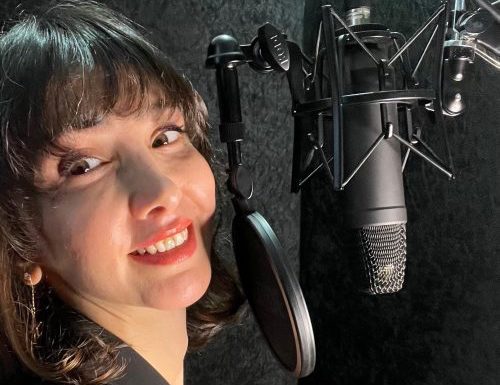In the era of video and podcasting, much of customer brand trust hinges on a strong and consistent audio presence.
But arranging voiceovers for ads, training tools, and social media touchpoints takes more than checking the box on someone who knows their ABCs of voice recording.
And while nowadays it’s easier than ever to make an AI voice choice to wax lyrical about your services or products, using even slightly robotic-sounding voices can badly impact customer brand trust.
After all, patrons want to feel that their most beloved products are being brought to them by real people–not an algorithm.
In this article, we’ll take a look-see at how voice choice in audio marketing can sway customer trust, and give you some pointers on how to choose the perfect voice for your brand.
The Impact of AI Voices on Customer Brand Trust
Artificial intelligence (AI) is everywhere these days.
From voice assistants and transcription tools to robot vacuum cleaners and security cameras, machine-learning systems have been integrated pretty seamlessly into our daily lives.
But while we might lean on Alexa to help us belt out a chorus of Happy Birthday (yes, it’s one of the most popular requests!), or seek out Siri when we need to know the quickest route to somewhere special, as humans we’d still rather trust our sentient counterparts when it comes to creating true connection.
According to recent research by American broadcasting company Audacy, we’re more than twice as likely to believe information delivered by a human voice (55%) than AI media (23%).
And, with three-quarters (75%) of American adults believing that synthetic media can feed us misinformation, a further worrying 58% have actually ‘fessed up to being duped by AI details.
AI Speech Struggles
When it comes to using AI voices in your marketing, it’s not only about trusting what’s been said; it’s also about trusting how it’s been said.
Because the truth is, artificial voiceovers still struggle with one of the most important elements necessary for building trust between brands and their consumers – emotion.
It seems that genuine expressions of love, joy, and even fear are hard for a machine to muster up. Go figure.
And while AI voiceovers have advanced to such an extent that they’re able to mimic different vocal pitches and speech patterns, they don’t have the intuitive expressiveness of a human voice.
Take the ad below, for instance, and imagine slipping in a robotic voice-over instead of Maria P.’s beguiling tone.
…Or, better yet–let’s not.
People vs. Machines in Branding
As a result of AI’s lack of emotional nuance and its reputation for being a bit shady, brands betting on voice synthesis, or text-to-speech (TTS) technology, to build trust and a long-lasting relationship with customers, will likely have an uphill struggle.
Whether creating commercials, how-to-videos, audiobooks, or social media shorts, the jury results are in – people trust people.
And the fact that artificial media is so ubiquitous plays as much to its disadvantage as its advantage: Most of us are now tuned in to the difference between a real human voice and a glorified chatbot.
The Emotional Power of Human Voices
However, even if you’re not taking the AI route when it comes to your audio marketing, your voice choice will still have an impact on whether your customers buy into your brand’s values.
Again, this comes back to emotions.
Think of every great perfume ad you’ve ever seen. The sexiness or sensuality typically conveyed even in the reveal of the special scent’s name goes a long way to making the product irresistible-sounding to its target audience.
Of course, you wouldn’t use this kind of sultry voiceover to boost every kind of brand. Science shows that different levels of voice pitch influence our perceptions of trustworthiness.
According to one study, higher-pitched male voices were deemed more trustworthy when it came to economic contexts.
Makes sense.
Most of us wouldn’t take money advice from Darth Vader or the Batman. But we probably would believe the more approachable, smoother tones of a soothing baritone.
It’s why global banks routinely employ voice actors with a friendly and familiar timbre.
The fact that they sound like someone we might know helps make the brand more relatable.
That’s not to say that a deep voice doesn’t have its place in cultivating customer brand trust.
Deep voices are often associated with confidence and power. If these are values associated with your brand, then employing voice actors with a more guttural growl may benefit your business.
Voice Choices That Help Craft Your Brand Story
The point here is to choose the kind of voice that can help you craft the story of your brand – highlighting its core value, purpose, and personality.
The more the voice reflects this narrative, the easier it will be to connect to those customers who resonate with it.
For instance, veteran actor Sam Eliott has a voice that sounds like it’s been soaked in whiskey, gravel, and a bevy of Hank William songs for a decade or three.
It’s a voice that connects with tough, rugged types, and is one of the reasons this charming Hollywood cowboy counts acting credits on commercials such as Ram Trucks, Coors Beer, and the National Cattlemen’s Beef Association (NCBA) among his achievements.
Eliott’s voice sounds authentic when discussing the benefits of these brands to their target customers.
As a result, it reassures those customers that these are brands that speak to who they are and the needs and desires they have.
The same can be said of British voice actor John C’s voice. In the airline ad below, his classy, comforting voice exudes confidence–exactly the kind of voice you need to nudge you to book a long-haul flight.
Voices that Highlight Quality and Credibility
This kind of credibility is not easily found in robotic-sounding AI voices and remains a huge consideration when using human voice actors for your marketing content.
You might think that ‘not being a machine’ is all the credibility a good voiceover artist needs nowadays.
Truth is, voice acting is a skill that is often honed over years.
The best voice talent continue their training even as the top jobs come rolling in.
In fact, they do it because the top jobs come rolling in.
Training can help them deliver the quality and reliability that brands and businesses need to stand out, evoking the genuine emotions necessary for brand recall in a bloated marketplace.
A more polished voiceover performance can also foster confidence in consumers that the brand takes engagement with its customers seriously.
As British voiceover artist, Graeme M. notes:
To not train or practice or research is the same as saying ‘I’m going to be lazy about this’.
Meanwhile, your competitors, or dare we say it the AI voice developers, are training really hard to be better than everyone else. So it really makes sense to stay on top of things. Otherwise, disappointment is waiting.
If you’re looking for genuine voiceover talent for your marketing campaign, look no further than Voice Crafter’s wide range of vetted professional voice actors.
Post your project on our online platform. Make sure you request custom auditions based on your script (it’s free!) to really hone in on the voice that’s right for your brand and message.
If you need help casting the right talent, we’re always happy to assist. Drop us a line and let’s connect.








0 Comments